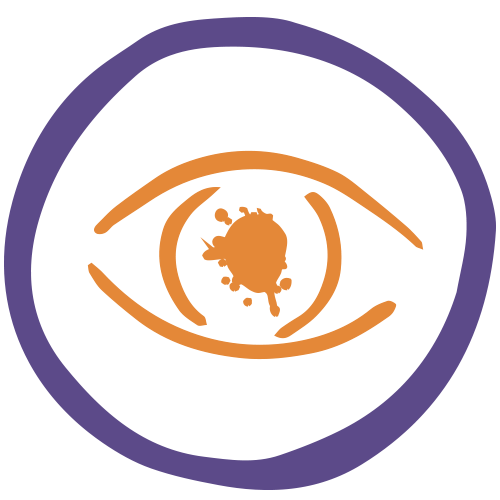We are a group of art students (aged 12 – 18) who wanted to explore the impact of beauty norms on our bodies and our communities. We had the opportunity to develop our ideas through our schools research centre about the pressure to conform to certain standards of what does or does not look good. This is the story of how our project has grown and inspired others to act.
![]()
“I don’t think us girls should have to change who we are to please a stereotype or to please anybody else” (Rotimi, Year 13)
![]()
Beauty norms
Constructed standards around what it “looks like” to be beautiful and attractive; people are judged on how well they meet that standard.

“Tamed, shaved, dyed or straightened, hair is a material that has been used by humans to construct a portrait. Human hair is shaped to be a social indicator between individuals to communicate their status and cultural affiliations. Although hair’s original state is characterized by richly diverse texture and colors, our idea of hair has been steadily standardized over the years by the cosmetics industry, media, and social conventions, making it akin to a uniform. (Alex Bizet, 2015)”
Working with the school’s artist in residence Alix Bizet, we began exploring hair as a material that opens up debate around societal beauty standards.
We were invited to collect hair from local hairdressers, which unlocked conversations about the role of hair salons in our communities and in constructing our own sense of identity.
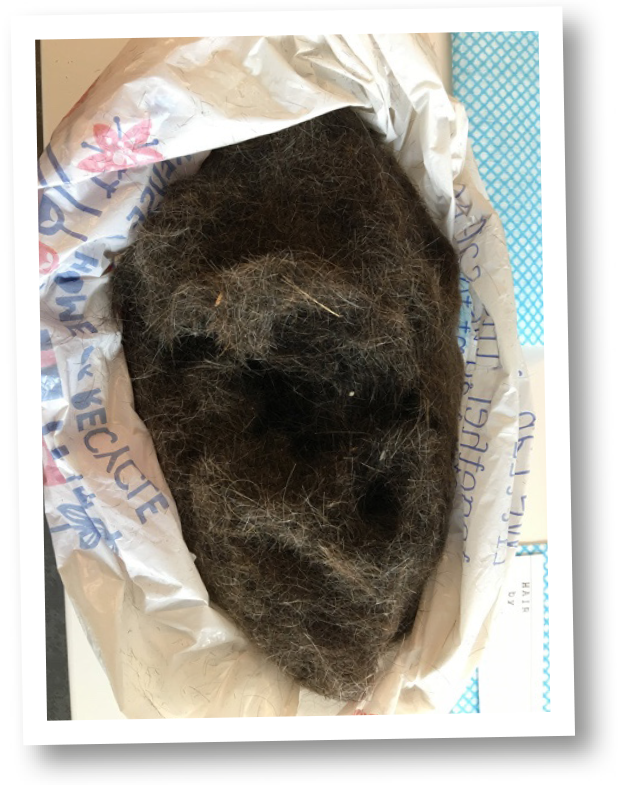
Once we had the hair we began making felt from it. Using a material that we had in our hands allowed us to focus less on our words and more on the activity, which enabled more creative thinking.
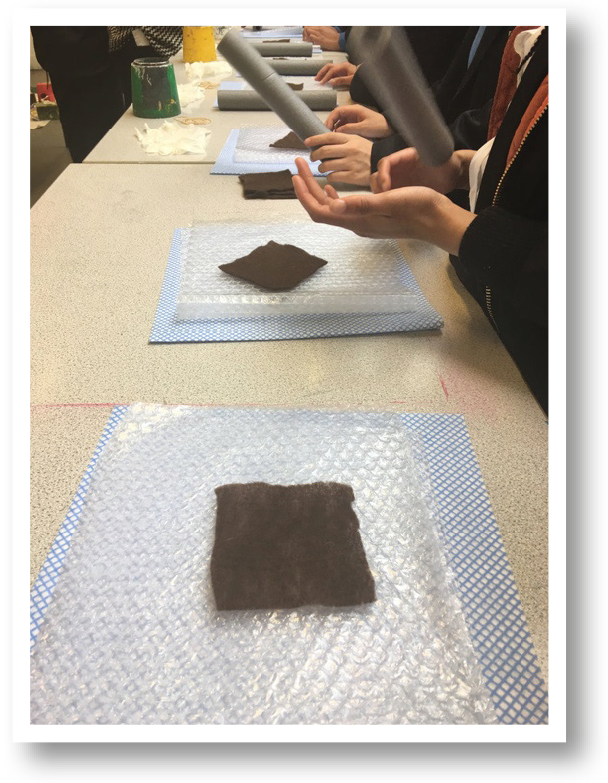
We created several felt squares that went towards creating a larger piece of felt. This was then shaped into a Hoodie. The hair in the hood therefore reflected the neighbourhood where the hair was collected.
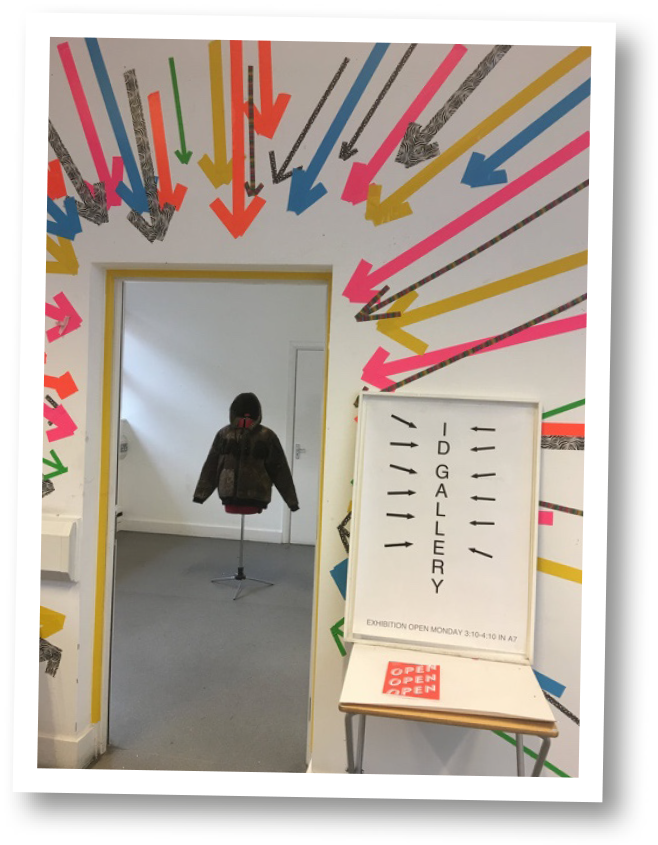
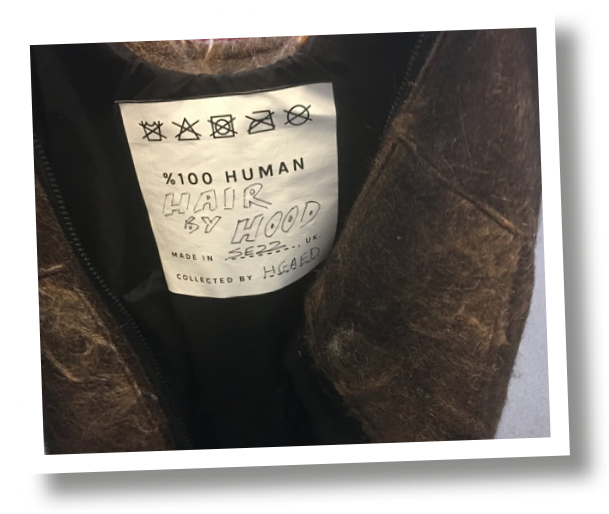
Hair By Hood has been displayed at school and art venues where lots of students have been brought together to touch it and read it. The project sparked many conversations and ideas that have inspired other student-led projects exploring similar themes and concerns.
After the Hair by Hood project, we wanted to continue thinking through making as well as support other students to think about body image. Rotimi and CJ, two Year 10 textiles students, helped run a student-led workshop on beauty norms with Year 8 students.
They broke the ice with a monstrously wonderful game of consequences, which used drawing to help challenge ideas of perfection.
These discussions were continued through working with clay. Students shaped their clay into different body shapes. Clay is an interesting material to think with as it can be pounded, pressed and pulled into various forms, but it is also difficult to make it conform to the images we had in our heads. Working with the clay created space for mistakes and laughter, as well as connected with our own bodily struggles to achieve societal standards of perfection.
Once the figures were completed, we created feminist protest placards demanding equality and respect and activated the figures into defiant bodily poses.
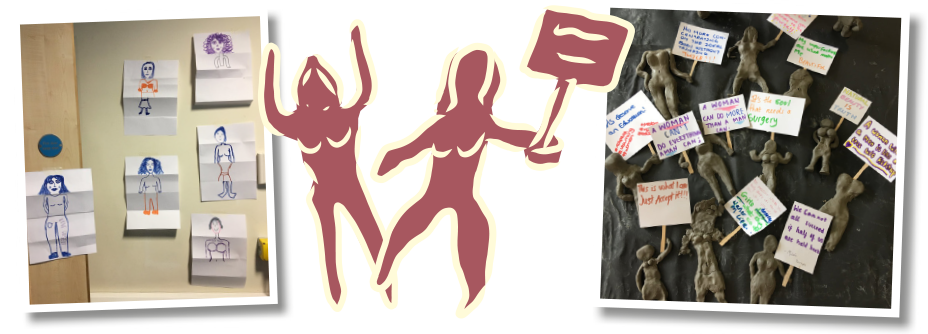
We have continued to think about beauty standards, and how they shape attitudes towards our local community. We live in an area that is experiencing a lot of change and gentrification. Working again with artist Alix Bizet, Ria and Ahamad had the opportunity to work on a project called Hairytage and contribute to a local exhibition. This included running a workshop on how gentrification matters to us, and exploring its impact on people in the area through hand tracing and mapping.
In the first part of the workshop, people were invited to draw around their hands and annotate them with their memories of the place. Working with hands helped open up conversations about community. The extended hand can be a symbol of friendship and support, it can also represent power and defiance.

“Gentrification is pushing one specific race out of the area, because it doesn’t look ‘appealing’ and they are sticking the hairdressers all in one building because they want the area to look ‘prettier” (Ria, Year 13)
“We all know gentrifications going on, it comes up in the news but then it’s discarded after a week. I wanted to really bring that up again, and see what we could do to change it.” (Ahamed, Year 13)
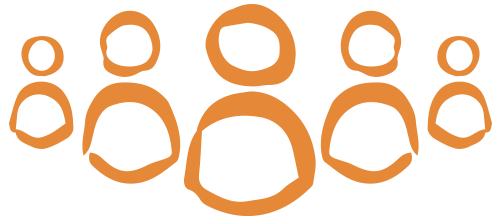
Gentrification
The process of repairing and rebuilding homes and businesses in an area (such as an urban neighbourhood) accompanied by an influx of middle-class or affluent people that often results in the displacement of earlier residents.
(Merriam Webster 2019)
Following on from this we used heart-shaped sticky notes and people wrote down all the things they love about living in the area. The sticky notes were then added to a map of the area. This got everyone talking about what it means to love an area, and how it feels when it changes around us. The stories that were shared in these workshops brought out the hidden histories of the place.
Building on these conversations we invited people to pick a word that stood out to them, and weave it into a tapestry using thread made of human hair. The tapestry weaves together different strands from our ongoing exploration of beauty norms.
We hope our tapestry continues to grow and gets people thinking about the changing face of our community.

“It was really interesting to find out what the deeper meaning and significance that hairdressers had in our local community” (Ria, Year 13)







